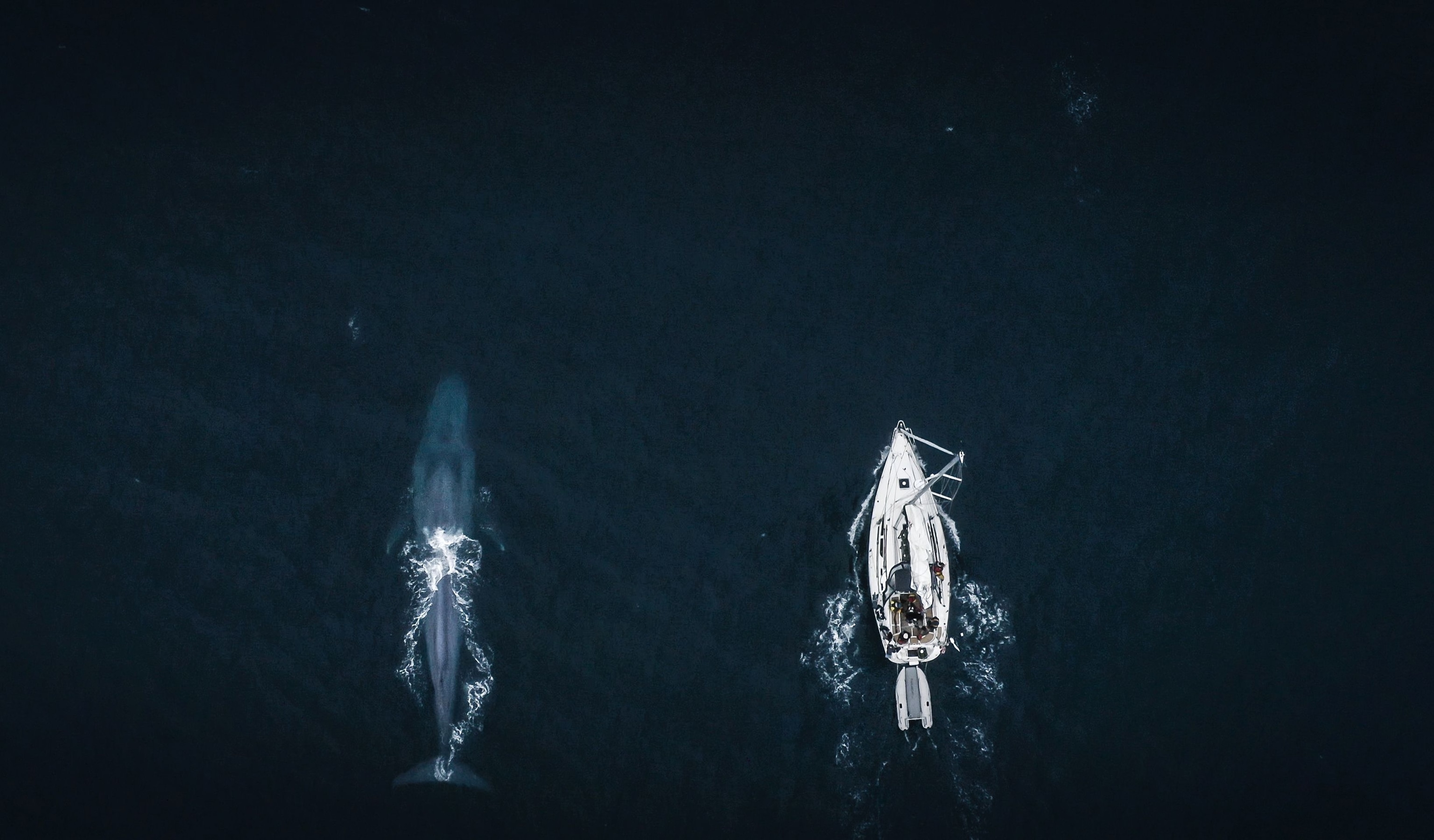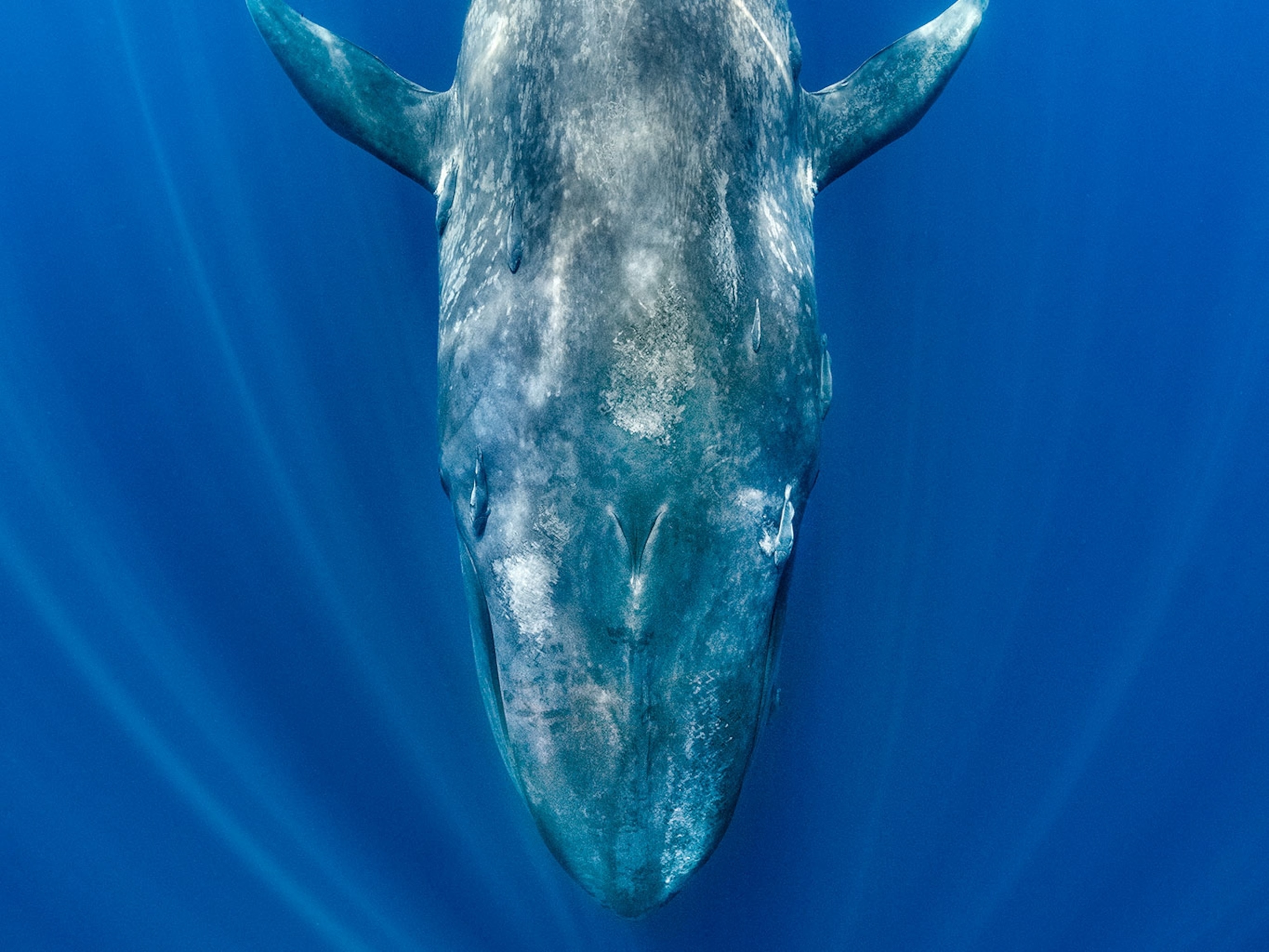
'It shows there is hope.' Off Svalbard, an encounter with the largest animal that has ever lived
Under the midnight sun of the Arctic circle, when a huge vapor blow disturbed the horizon this research ship turned to investigate. The result was an unforgettable encounter.
It’s early August and the research vessel Barba sails at 80 degrees north along the coastline of Svalbard. The endless Arctic sun lies low on the horizon, the ocean is calm, and the temperate a mild 5 degrees. The team aboard are just 12 hours south of the pack ice surrounding the North Pole, and underway on their circumnavigation of the archipelago as part of the Arctic Sense 2021 Expedition. It’s approaching midnight when Barba’s captain, Norwegian marine biologist Andreas B. Heide, receives word that there may be blue whales in the area.
“We had sailed the entire day and just come around the northern tip of Spitsbergen,” recalls Heide. “I sat there with my binoculars just looking and looking, and then I saw, in the far distance, a faint blow on the horizon.” At 5-10 nautical miles away, detecting a blow at this range indicated that it could only be a blue or fin whale. Heide made the call and the crew changed course.
An hour later they sailed beside a mature blue whale—the largest animal known to have ever existed. Photographer Tord Karlsen readied his drone and wildlife cinematographer Mark Romanov prepared his cameras. “The moment we saw it was pure joy and one of my life’s highlights,” says Heide. “We were 5 meters away and the whale’s blow sprayed into our faces. Barba is 12 meters long, so this gives you an idea of how large this individual was.”
The moment we saw it was pure joy... we were five metres away.Andreas B. Heide
The team remained with the whale until the early hours of the morning. Drones were used for identification and to document overall body condition. Additionally, the whale was filmed with a 360-degree camera for educational purposes as part of the Nordplus programme, alongside footage for an upcoming documentary in the context of greater conservation.
Once documented, the team spotted blows further south, and an hour later sailed alongside two more blue whales. Heide saw several more of the vapour exhales in the vicinity and estimated that there were approximately 10 individuals in total. (Related: blue whales are mostly left handed, study shows.)
Blue whales were hunted to near extinction, and as specialised feeders consuming only krill, they have made a slow recovery since whaling ceased. Estimates today indicate there are approximately 1000 individuals in the North Atlantic. “On that one day, we were lucky enough to see around 1% of the entire population of the North Atlantic, which was incredible,” adds Heide. “It was a very touching moment to see something so fantastic and so majestic, especially knowing it could have been lost. Their slow recovery is a success for conservation. It shows there is hope.”
For the 2022 season, Heide’s mission is to sail back to Svalbard to engage, study and further document blue whales in the Arctic.
This article was adapted from the National Geographic U.K. website.





